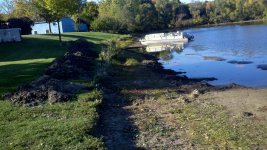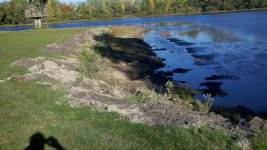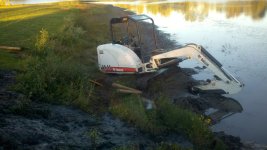Creamer
Elite Member
I am renting a small tracked excavator to repair the banks of my pond/lake (about 14 acres under water). I have had some erosion of the banks in some areas and muskrat damage in other areas. We have had a really dry summer so the pond is as low as I have seen it in twenty years. The pond bottom seems firm enough that I think I can take the excavator onto the pond floor beyond the pond bank and therefore I can dig the muck on one side of the machine and deposit on the other.
I think I know what I am doing but would appreciate some wisdom on things not to do.
I think I know what I am doing but would appreciate some wisdom on things not to do.




